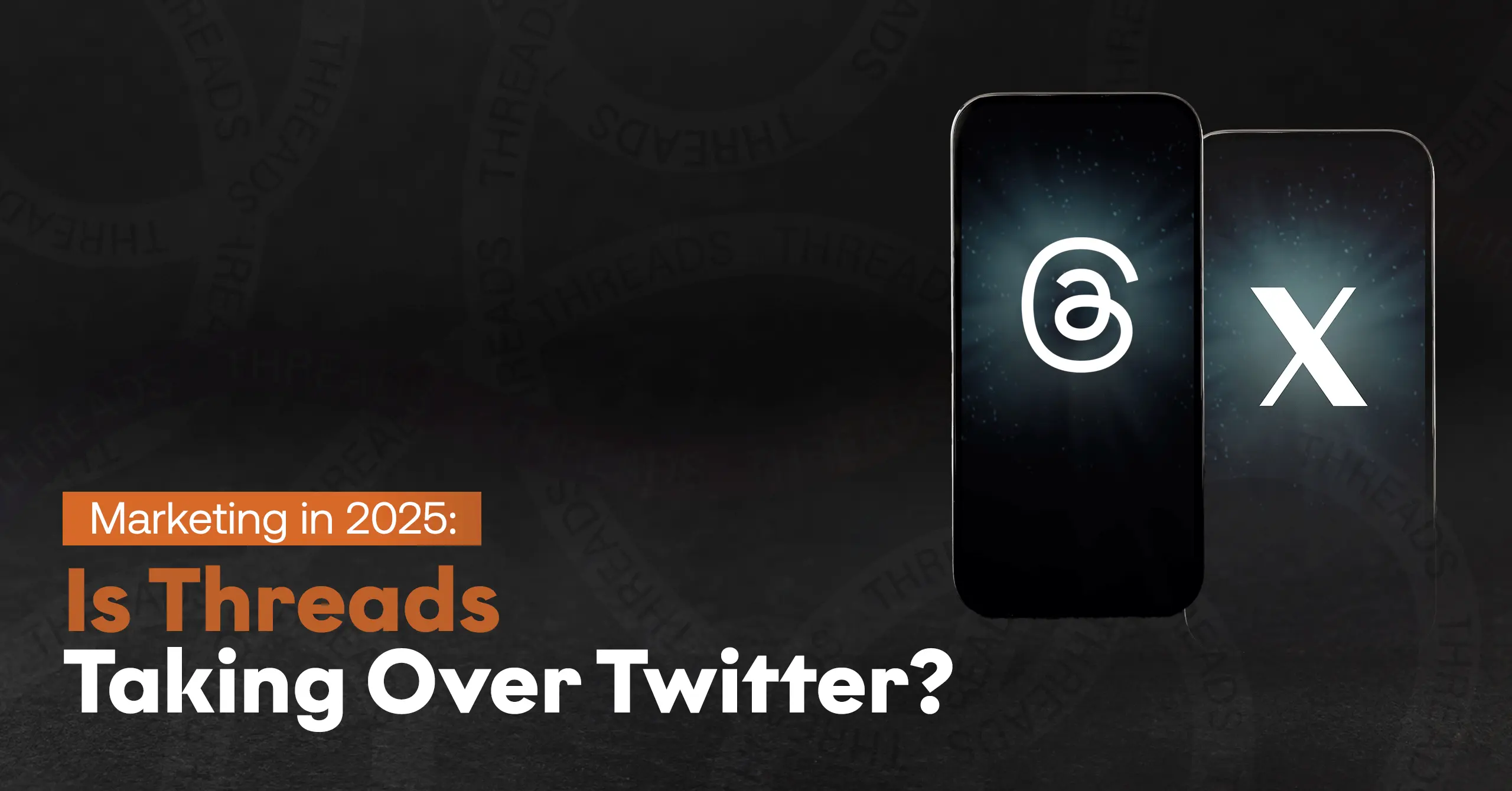Threads vs. Twitter: Where Should Marketers Focus in 2025?

Social media never sleeps—and in 2025, neither do marketers. As platforms evolve and new contenders rise, we’re all asking the same thing: Where should we be spending our time, energy, and budgets? Right now, two platforms are going head-to-head for marketers’ attention: Twitter (aka X) and Threads.
Twitter is the long-time ruler of real-time chatter, while Threads is the new kid on the block powered by Instagram’s social graph and a vibe that’s more community than chaos. But which platform deserves your marketing love in 2025? Let’s look into the world of Threads vs Twitter and help you figure out where your brand belongs.
Threads vs Twitter: A Quick Comparison
Before we get into the nitty-gritty, here’s a bird’s-eye view of how the two platforms stack up.
Now that we’ve set the stage, let’s break down the difference between Threads and Twitter with a marketer’s lens.
User Demographics: Who’s Hanging Out Where?
Threads: Gen Z’s Favourite Group Chat
Threads quickly became a favorite among younger users, especially those aged 18 to 24. Its integration with Instagram means you get access to a visually savvy audience that values aesthetics, authenticity, and social causes. Threads feels more like a curated group chat than a public square—ideal for brands that want to build communities over going viral.
Twitter (X): The OG of Breaking News and Hot Takes
Twitter still reigns as the go-to place for breaking news, political discourse, and trend-driven memes. Its audience skews a little older and more diverse in interests. From journalists to crypto bros to K-drama fan accounts, Twitter’s user base is massive and chaotic in the best (and worst) ways. If your brand thrives on trends, hot takes, or humor—this is still a powerful playground.
Algorithm and Visibility: How Do You Get Seen?
Threads: Engagement Over Everything
Unlike Twitter, Threads doesn’t rely on hashtags or trending topics. Instead, its algorithm prioritizes engagement-based content and leans on Instagram’s social graph to recommend posts. Posts often have a longer shelf life, meaning brands have more breathing room to create thoughtful content. Less noise, more relevance.
Twitter: Virality, Trends, and Ephemeral Moments
Twitter is still all about immediacy. The lifespan of a tweet is around 18 minutes, and trending hashtags can make or break your visibility. The platform pushes viral content hard, making it a goldmine for trendjacking—but only if you’re fast and clever.
Also Read – Instagram Threads & Twitter: Discovering the Differences and Similarities
Advertising and Monetisation: Where Should You Invest?
Threads: Still in Beta Mode
Meta is slowly rolling out advertising features for Threads, mirroring Instagram’s tools. As of early 2025, Threads supports organic promotions and brand collaborations but doesn’t yet have the full suite of ad targeting tools. Great for authentic engagement and influencer partnerships, not so much for performance marketing just yet.
Twitter: Advanced Ads for Instant Impact
Twitter has had years to build out a full ad ecosystem, and it shows. With promoted tweets, trending takeovers, and video ads, brands can target based on demographics, interests, behaviors, and even conversation keywords. For performance marketers chasing ROI and conversions, Twitter offers more advanced tools—though recent policy changes under Elon Musk have introduced some brand safety concerns.
Brand Engagement: Which Platform Builds Stronger Connections?
Threads: Deeper Conversations, Lower Pressure
Because Threads isn’t built around virality, the pressure to “go viral or go home” is lower. Brands that invest time here can build more meaningful conversations. The tone is more authentic, less performative, and people are generally more receptive to brand voices that feel human.
Twitter: Fast Engagement, Short Attention Spans
Twitter is fantastic for real-time engagement, especially during events, crises, or viral moments. But the competition for attention is fierce. Brands need to be funny, fast, and fearless. While it’s harder to build long-term relationships here, the visibility payoff can be enormous when done right.
Key Marketing Use Cases: When to Use Each Platform
Choose Threads If You’re All About:
- Building long-term brand loyalty through conversation.
- Reaching younger users who value transparency and values.
- Leveraging your existing Instagram following.
- Participating in a less toxic, more civil space.
Choose Twitter If You Want To:
- Participate in real-time cultural moments.
- Amplify a campaign with viral potential.
- Run targeted ad campaigns with measurable conversions.
- Be present where journalists, politicians, and decision-makers live.
Platform Growth and Future Trends
Threads: Slow Burn or Explosive Growth?
Threads has doubled its user base in less than a year, and with Meta’s backing, its future looks promising. Expect better ad tools, integration with Reels and Instagram Shopping, and more community features by mid-2025.
Twitter: Reinventing or Stalling?
Twitter’s rebrand to “X” was bold—but not without bumps. While it’s still holding strong user numbers, concerns about content moderation and ad safety remain. That said, Twitter’s role as a real-time pulse of the internet is still unmatched.
Threads vs X: Which Platform Wins in 2025?
Truthfully? It depends on your goals.
- Want to spark conversations, be relatable, and build community? Go for Threads.
- Need to ride trending waves, launch time-sensitive promos, or push quick conversions? Twitter’s your go-to.
But if you’re a smart marketer (which we know you are), the real play is in balancing both.
Threads and Twitter are not mutually exclusive—they serve different moods, different moments, and different marketing objectives. Use Threads for depth. Use Twitter for reach.
Which Platform Deserves Your Time in 2025?
As we look ahead, one thing’s clear: marketers can’t afford to ignore either platform. Threads is on the rise, pushing us toward a future where connection beats chaos. Twitter still owns the present when it comes to speed, influence, and viral reach.
The most future-ready brands will be the ones who stop thinking in binaries and start thinking strategically. Know your audience. Know your voice. And show up where you can truly shine—whether that’s on Threads, Twitter, or both.

